Straw shows what happens when life keeps throwing punches and no one steps in to help. Tyler Perry tells the story of a single mother named Janiyah who wakes up thinking it will be another rough day and ends up in a full-blown standoff inside a bank. Nothing about her situation feels over the top.
Everything that happens feels real. She is just trying to take care of her sick daughter and keep a job, and stay in her home. One problem follows another, and no one listens. She loses her paycheck. She loses her home. She gets blamed for a crime she did not commit. All she wanted was to be heard and seen.
Straw is not a film where things magically fix themselves. It follows a woman who reaches her breaking point after being pushed too far for too long. Tyler Perry does not try to clean it up.
He shows how survival looks when the system stops working. It is hard to watch at times, but it is never exaggerated. Each moment builds on the last and makes it harder to look away. These are ten moments from Straw that show how Perry tells this story with raw honesty and no shortcuts.
Disclaimer: This entire article is based on the writer's opinion. Readers' discretion is advised.
10 Straw moments that reflect the brilliance of Tyler Perry
1. Janiyah’s Grocery Store Breakdown
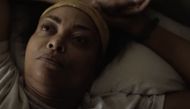
A customer throws a bottle at Janiyah when she refuses an EBT transaction that does not qualify. Her boss walks over and tells her to clean up the mess without asking what happened. She does not push back because she needs the job. She gets on her knees to clean broken glass while people stare.
This is the first time the audience sees how people treat Janiyah as less than human. Perry uses this scene to show how quiet disrespect builds pressure. It does not look violent, but it chips away at her dignity in a way that never leaves.
2. The CPS Taking Aria Away
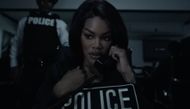
Janiyah arrives at her daughter’s school and sees strangers putting Aria in a car. She runs toward her and yells to stop them, but no one responds. She tries to explain that the bruises came from a bath accident. They don’t let her talk.
This scene shows what it feels like when people in power make decisions without listening. Janiyah doesn’t scream or fight because she knows it won’t change anything. The audience doesn’t yet know this moment isn’t real. Perry uses it to reflect how fast the world can flip on people who are already struggling to stay afloat.
3. The Off-Duty Cop Incident
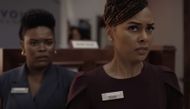
Janiyah accidentally cuts off another driver on a rainy road. The man throws a drink at her windshield and follows her until she crashes. She finds out he is a cop when officers show up and ignore her side. They impound her car for expired documents.
This moment turns minor traffic trouble into something terrifying. The officers treat her like a problem rather than a victim. It makes clear that being right does not mean being safe. Janiyah loses her only transportation, and Perry shows how power and fear move hand in hand when no one is watching.
4. Richard Refusing the Paycheck
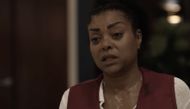
After returning to work late, Janiyah is fired on the spot. She asks for her final check and tells her boss she needs it now. He looks her in the eye and tells her she will get it in the mail. Then he walks away without another word.
This moment pushes her over a line. The money is already hers, and she still cannot access it. Perry does not turn it into a shouting match. He makes it silent and cold. This is not just a policy decision. It is a personal blow that shows how people can hide behind rules.
5. The Grocery Store Robbery
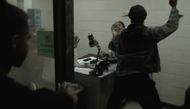
Janiyah returns to demand her paycheck. Two masked men enter the store with guns. One tells her to hand over her daughter’s backpack. She refuses because it holds medicine. During a struggle, she shoots one of the robbers. Her boss accuses her of planning the whole thing.
He calls 911 and names her as a suspect. Perry frames this scene as a turning point. She does the right thing, but still gets blamed. This is when the situation moves from bad luck to full collapse. The robbery doesn’t just expose fear. It exposes how fast people choose blame over truth.
6. Janiyah Pulling a Gun at the Bank
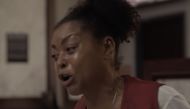
Janiyah enters the bank with her bloodstained paycheck. She asks the teller to cash it. They ask for ID she no longer has. The teller says no. Janiyah places the gun on the counter. She does not threaten. She does not shout. But the entire bank shuts down.
This moment starts the standoff. Perry doesn’t paint her as a criminal. She wants her money and has no options left. The blinking science project in her daughter’s bag makes things worse. Everyone sees a threat. No one sees a mother. This is the moment where fear replaces any chance of reason.
7. Nicole Seeing the “Bomb” in Aria’s Backpack

Nicole glances at the bag and sees lights flashing through plastic. She thinks it is a bomb and tells security. They call the police. The bag holds a school science project. Nicole does not know that. She believes what she sees, and it changes everything.
This moment turns the bank scene from robbery to potential terrorism. The police escalate their response. The FBI steps in. Perry uses this to show how one assumption can spark massive consequences. Nicole is not cruel. She is scared. But that fear reshapes Janiyah’s fate and drags her deeper into a hole she can’t climb out of.
8. Janiyah’s Monologue During the Live Stream

A bank teller quietly livestreams Janiyah as she explains why she is there. She says she is tired of being ignored. She says people do not see her as human. She talks about her daughter and the system that keeps taking everything away from her.
This is the first time the outside world has heard her. Perry makes it feel real and quiet. The livestream goes viral. People gather outside the bank. She doesn’t ask for help. She tells the truth. That raw honesty changes the public view. For once, Janiyah’s voice cuts through the noise, and people actually listen.
9. The Truth About Aria’s Death
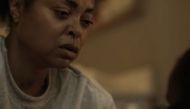
Janiyah’s mother calls and tells her the truth. Aria died the night before from a seizure. There was no school drop-off. There was no CPS visit. Everything she thought happened was imagined. She breaks down and cannot speak.
This moment reshapes the entire film. What looked like misfortune becomes a collapse of reality. Perry does not use music or effects. He lets silence tell the story. Every event in the movie suddenly takes on a new meaning. Aria’s absence is not symbolic. It is final. And Janiyah has been living in a version of the day that never existed.
10. The Fake-Out Ending with the Police Shooting

The FBI storms the bank, and Janiyah stands still. Officers shout for her to drop the gun. She doesn’t move. They shoot her, and Nicole screams. The film freezes. Then it cuts back. The shooting did not happen.
Janiyah walks out with her hands raised. Nicole holds her arm. Detective Raymond places her in cuffs. This ending plays out in Janiyah’s mind before it happens. Perry uses it to show what fear looks like from inside. This isn’t for shock. It is for the truth. The fear of death feels real even when the ending chooses something softer.
Follow for more updates.
Love movies? Try our Box Office Game and Movie Grid Game to test your film knowledge and have some fun!
